

Josh Nevett
2025 Bentley Bentayga review
5 Days Ago
New looks, increased spec, new variant names, plus higher pricing – is the Kia Carnival still king of the people movers?

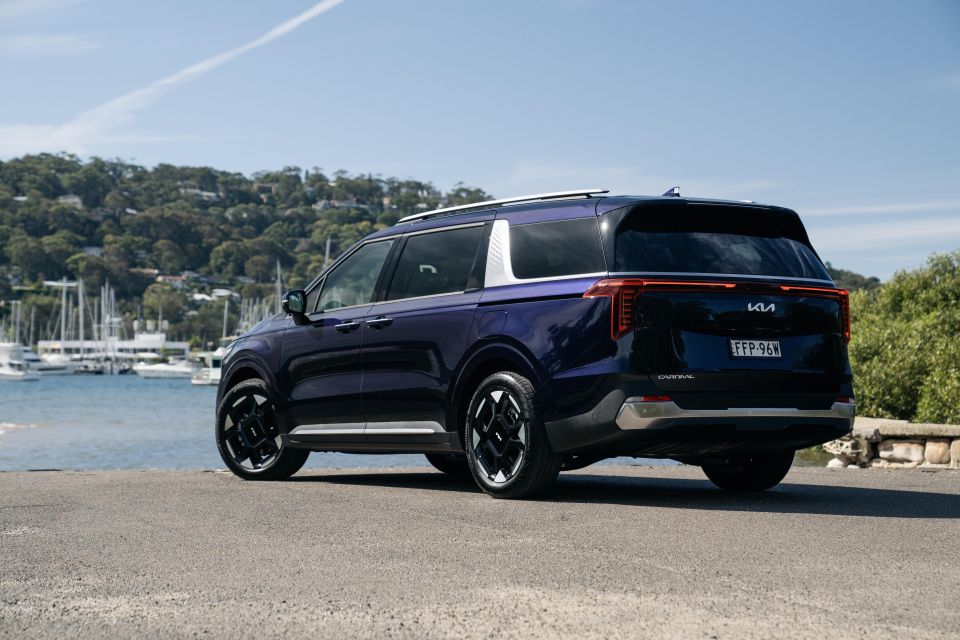

Quickly see how this car stacks up against its competition. Select any benchmark to see more details.
Where expert car reviews meet expert car buying – CarExpert gives you trusted advice, personalised service and real savings on your next new car.
The Kia Carnival has been the king of the people-mover segment for a while now, and the South Korean brand has just updated its eight-seater range.

It’s more than just a minor adjustment, too – the updated Carnival scores a new look, new tech, new interior elements, additional safety features, retuned suspension and steering for that Kia Australia-specific feel, revised variant naming, and a higher price point across all grades.
The question is, have all those changes been worthwhile? And furthermore, should you wait for the hybrid model? Or get into one of the petrol or diesel variants?
We’ll tell you our pick of the range in this review, and you’ll get all the details on the entire model lineup too.
Prices are up across the board, although there is also more equipment in the new Carnival.
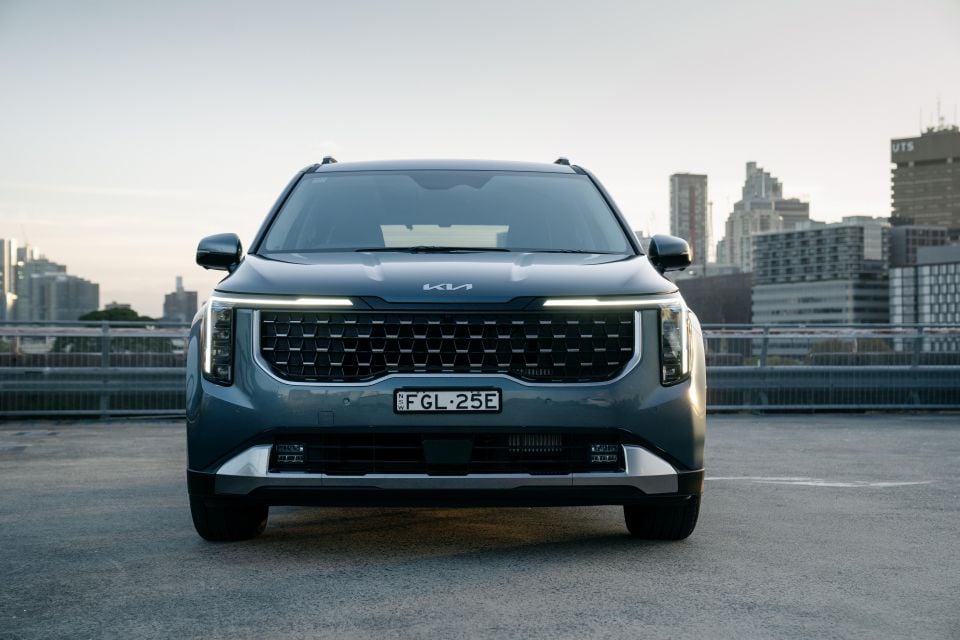
| Variant | Price | Increase |
|---|---|---|
| Kia Carnival S V6 | $50,150 | $2760 |
| Kia Carnival S Diesel | $52,380 | $2900 |
| Kia Carnival Sport V6 | $56,050 | $3070 |
| Kia Carnival Sport Diesel | $58,280 | $3300 |
| Kia Carnival Sport+ V6 | $62,380 | $4600 |
| Kia Carnival Sport+ Diesel | $64,610 | $4830 |
| Kia Carnival GT-Line Lite V6 | $66,350 | $5160 |
| Kia Carnival GT-Line Lite Diesel | $68,580 | $5390 |
| Kia Carnival GT-Line V6 | $70,680 | $5100 |
| Kia Carnival GT-Line Diesel | $72,910 | $5330 |
| Kia Carnival GT-Line HEV | $76,210 | new |
You could consider an option like the LDV Mifa, which starts at $53,990 drive-away and is available with a petrol powertrain. Or the LDV Mifa 9 – a fully electric take on the theme – which kicks off at a staggering $104,000 plus on-roads.
Or you might take a look at the Toyota Granvia, which has the choice of six or eight seats, and starts from $68,306 plus on-roads.
Or the Hyundai Staria, which has petrol V6 or diesel options, but in that instance the four-pot diesel has all-wheel drive, and that could be a great advantage for some buyers. It kicks off from $49,000 plus on-roads.
To see how the Carnival shapes up against its major rivals, check out our comparison tool.
There have been improvements to the look of the interior, with new displays across the range.

A frustration expressed by Kia Australia was its inability to fit the larger screen setup earlier, but now there’s a 12.3-inch touchscreen media system with wireless Apple CarPlay and Android Auto, not to mention Connected Services with over-the-air updates available, and faster USB-C charging capability.
For the S and Sport grades there’s a 4.0-inch configurable driver information display flanked by a digital display for the speed and revs, while the higher-spec models score a 12.3-inch driver information screen upping the ambience. It’s fits better with the layout of the curved cockpit screen surround.
That 12.3-inch driver info screen also means the step up to include Blind Spot View Monitor, a clever camera system that can help you keep an eye on what you might not otherwise see behind you.
The controls for the media screen have been upgraded with new menus and designs, and they look terrific. While there are few buried menus here and there, you do get used to the design pretty quickly.
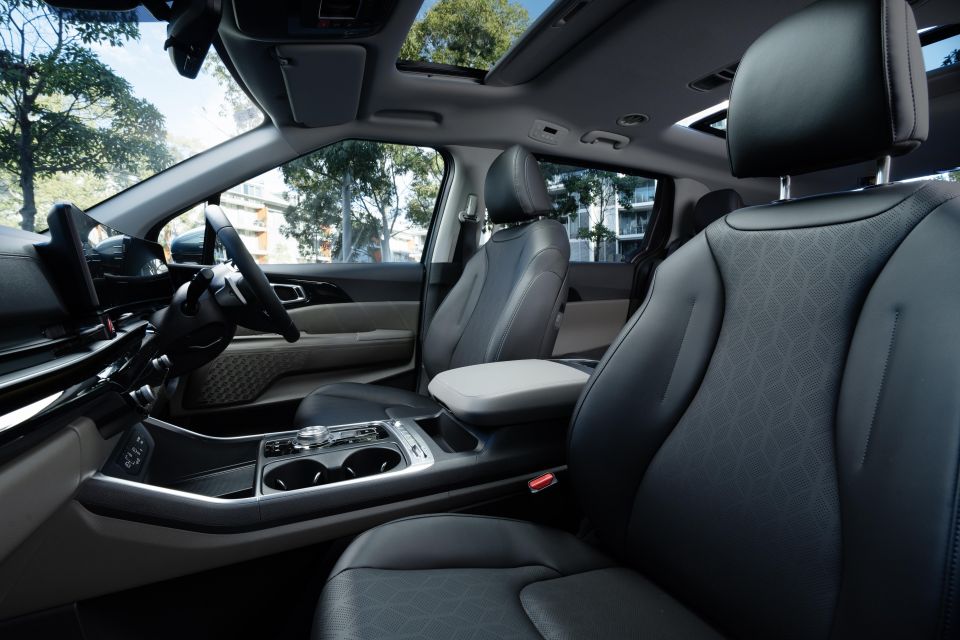
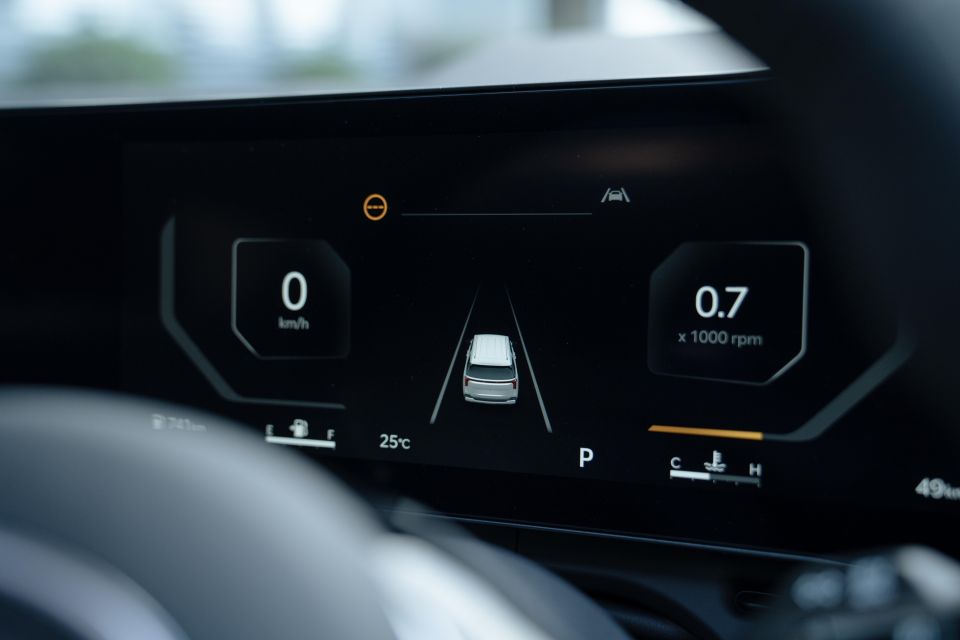

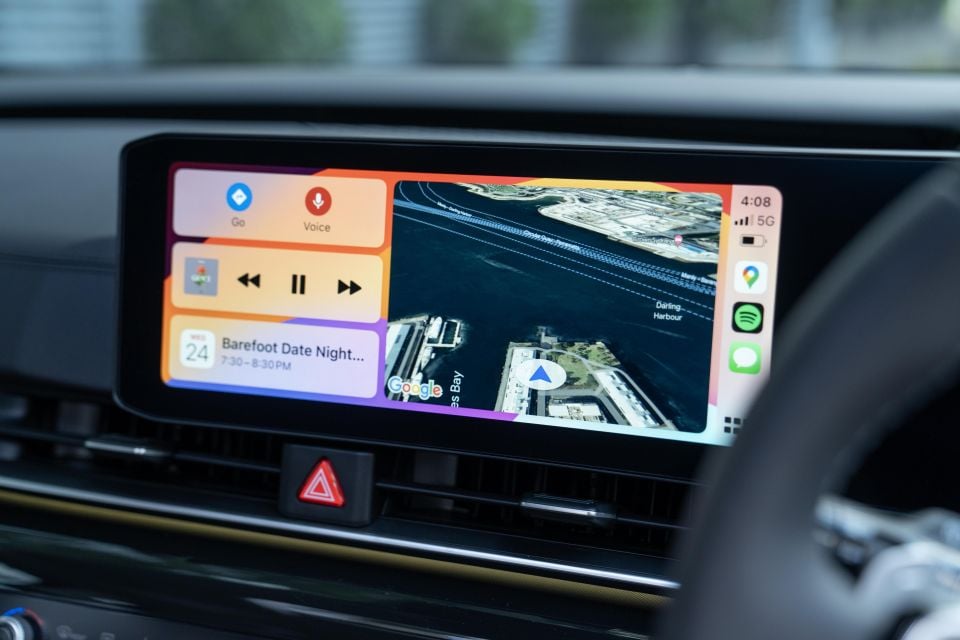
Further, the panel below has been streamlined, with a switchable design similar to what’s in the Sportage.
It means you still have dials for your climate control settings, and they are switchable to volume and tuning dials, while between is an array of touch buttons which are simpler to use than you might think at first glance.
As you’d expect, storage in the front of the Carnival is terrific, with a set of big door pockets, cupholders between the seats, a stowage section for your phone (with wireless charging in some grades), and a big covered centre console area for hiding snacks.
The second row is likewise excellent in terms of space and usability, with easily adjustable seats that can individually slide and fold, and the middle section can be reversed or removed if required. There are bottle holsters, map pockets, and fan and climate controls in higher specs, too.
Top-spec models have retractable sunshades on the electric-operating sliding doors, and they also have electric windows in those doors, too.
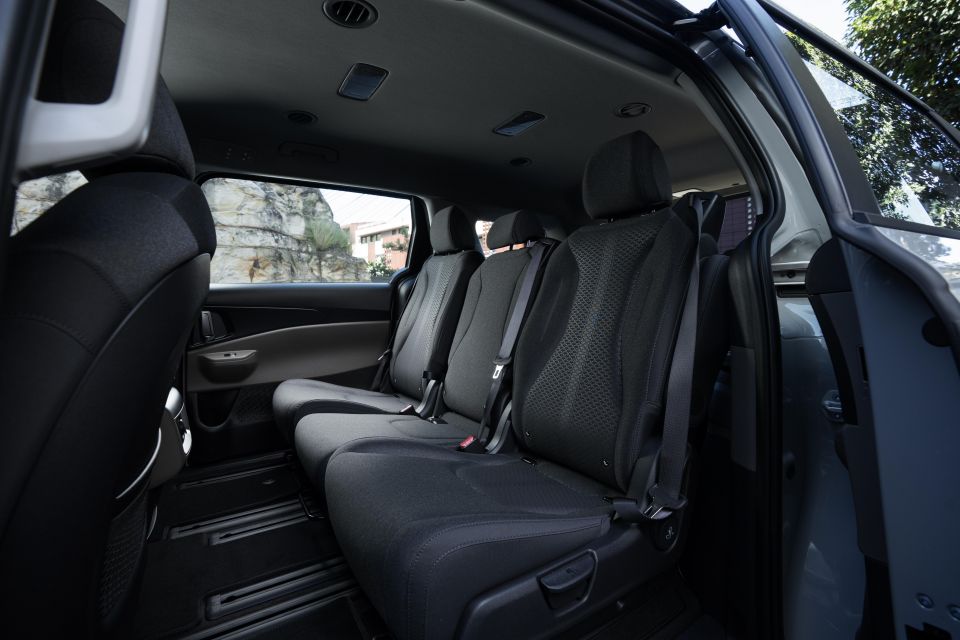
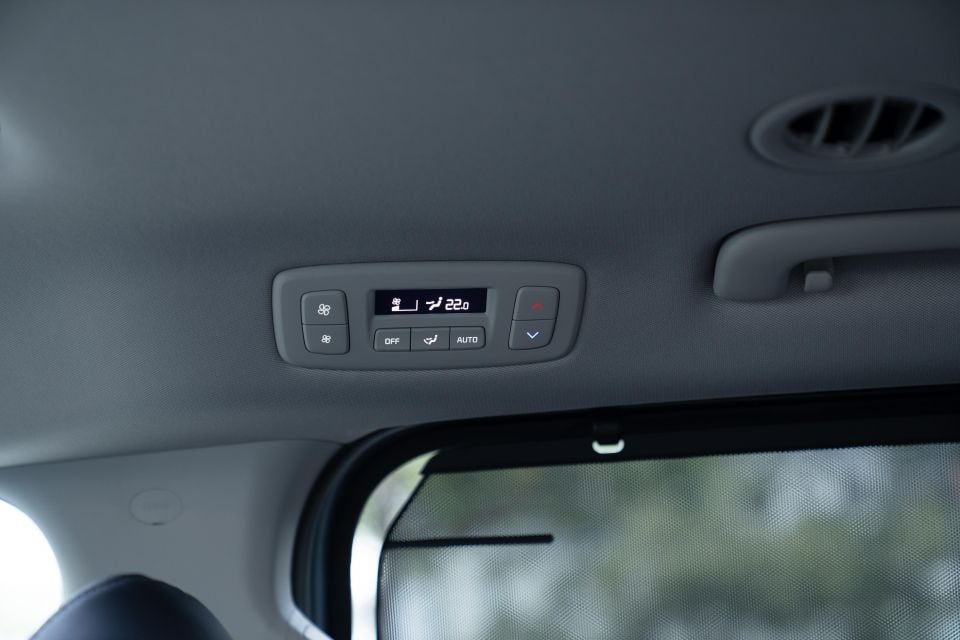
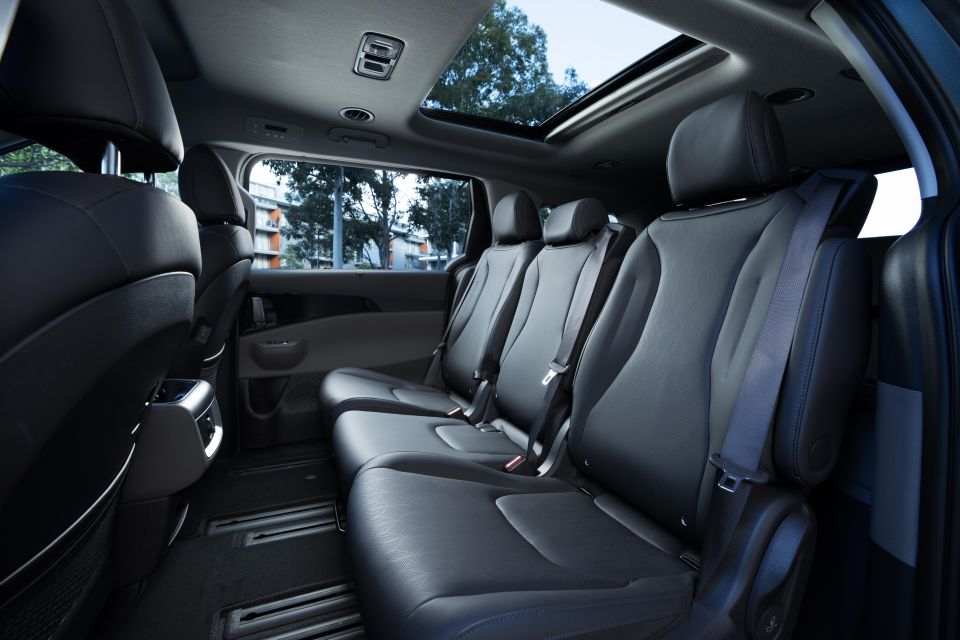

All three middle-row seats have ISOFIX and top-tether points, which is super handy, and the outboard ones are extremely easy to tilt and slide to allow back-row access. Even my bigger-than-average body could slink in simply.
Third-row space is also excellent, with enough room for me (at 182cm/6’0 and a little wider than average) to sit behind someone of a similar size in front.
Those in the third row have cupholders, and high-spec models add USB-C charging points too. There are vents back there as well thankfully, and again sunshades in higher versions.
In a win for the breeders, there are two more ISOFIX and top tethers (for a total of five), making it one of the most practical cars in the country for big families. Just keep in mind that the centre seatbelt still falls from the ceiling rather than being integrated into the seatback itself.
The most brilliant thing about the Carnival, however, is its boot setup.

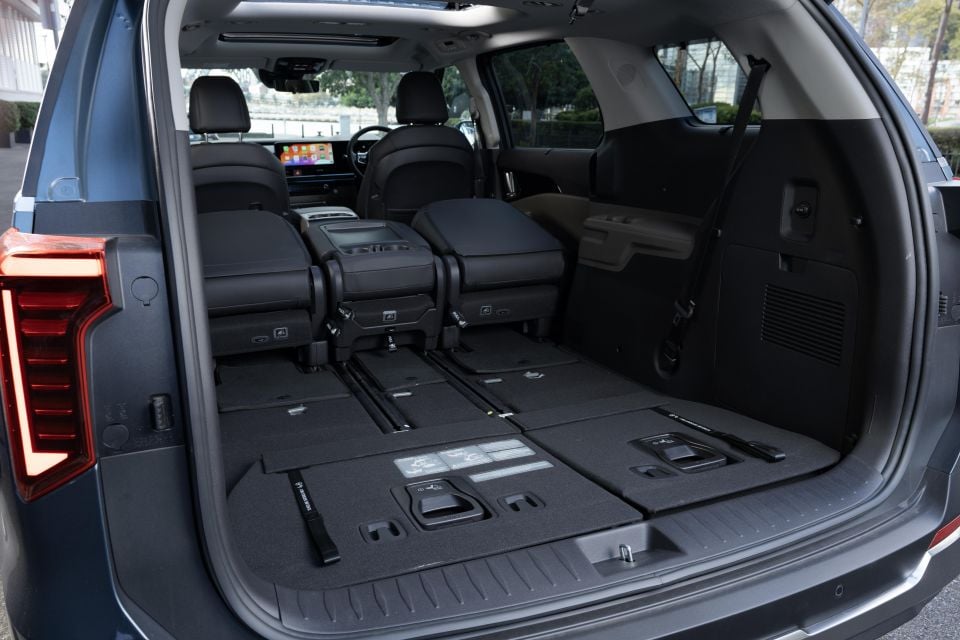
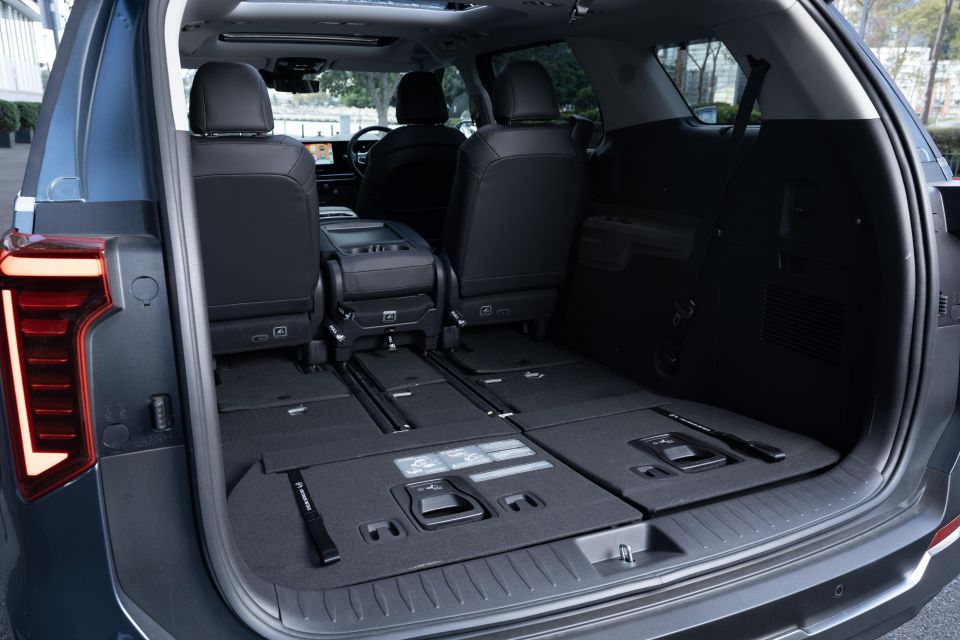
If you need to use all three rows, there’s a staggering amount of cargo space (627 litres, VDA), which is more than some SUVs have with the back row out of use!
The Carnival’s third-row seats can be folded down – one-handed, I might add – and sunken into the storage well in the boot area. If you do that, you’ve got an unfathomable 2827 litres (VDA) of cargo capacity. Suffice to say, this could be the most practical five-seater on the planet if that’s what you’re aiming to get.
There are shopping bag hooks and other storage helpers in the boot as well. And don’t go thinking there’s no spare wheel, either – there is! It’s positioned under the body of the vehicle, just near the driver’s side sliding door.
The new-look Carnival has two carryover engine options, and a new hybrid exclusive to the GT-Line.

| Model | Petrol | Diesel |
|---|---|---|
| Engine | 3.5L V6 | 2.2L 4cyl turbo |
| Power | 216kW | 148kW |
| Torque | 355Nm | 440Nm |
| Transmission | 8-speed automatic | 8-speed automatic |
| Driven wheels | Front-wheel drive | Front-wheel drive |
| Weight | 2206kg (kerb) | 2245kg (kerb) |
| Fuel economy (claim) | 9.6L/100km | 6.5L/100km |
| Fuel economy (as tested) | 12.4L/100km | 7.0L/100km |
| Fuel tank size | 72L | 72L |
| Fuel requirement | 91 RON | Diesel |
| Payload | 700kg | 725kg |
| Towing capacity (unbraked) | 750kg | 750kg |
| Towing capacity (braked) | 2000kg | 2000kg |
The new hybrid makes do with a 1.6-litre turbo-petrol engine with a six-speed automatic, and there’s an electric motor integrated into the transmission. It’s mated with a small lithium-ion battery pack, and is front-wheel drive.
It’s the same electrified drivetrain offered in the Sportage and Sorento, as well as the Hyundai Santa Fe.
To see how the Kia Carnival lines up against the competition, check out our comparison tool.
There have been some changes to the drive experience, but not in terms of the powertrain choices.
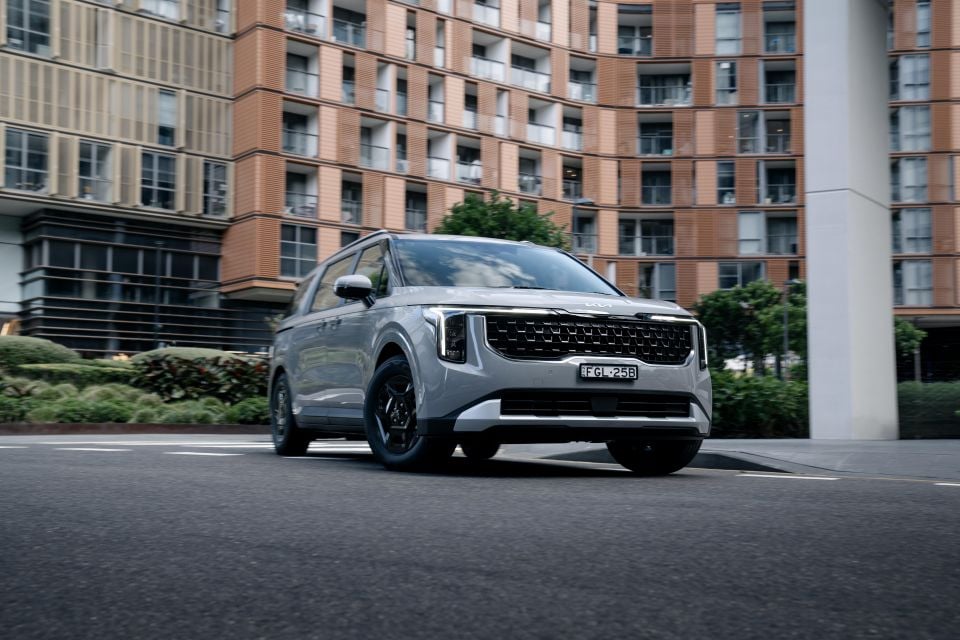
That’s no bad thing – particularly in the case of the diesel, which accounts for around 90 per cent of all Carnival sales in Australia – because it’s easily the pick of the powertrains so far.
The turbo-diesel offers ample, easy-going grunt, making the hard work of hauling big families just so much easier than the naturally aspirated V6 petrol.
That’s not to say the petrol is a dud. It’s still very powerful and offers a heap of character. But it’s let down by the fact it needs revs to get the most out of it, and you might struggle to get there if you’re in slippery situations, as it spins its front tyres more readily than you’d expect.
It simply makes the diesel look like even more compelling, though there are some considerations for buyers interested in the Carnival who primarily drive in the urban grind.
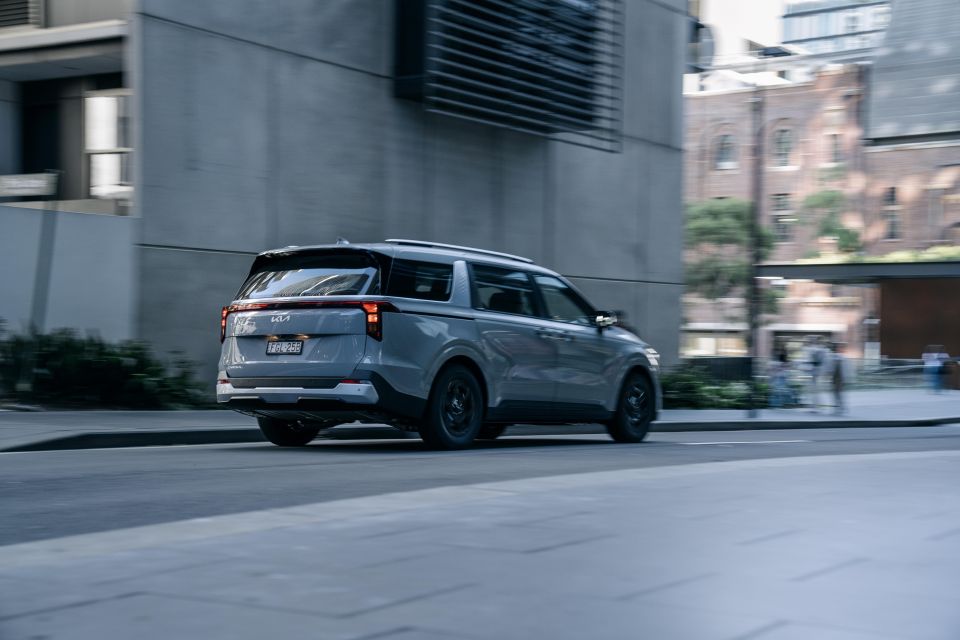
The diesel particulate filter system will occasionally require you to do some consistent higher-speed motoring, and if that’s not part of your routine, and you’re time poor, it can be a problem.
However, both versions have clever and logical transmission setups – the diesel’s does a great job of harnessing the low- and mid-range pulling power; while the petrol’s is pretty smart too but can occasionally upshift too soon, meaning it might have to hunt for the right ratio at times.
What’s been a big change, though, is the ride and handling tune. The brand didn’t get to fettle the shocks and steering setup for the pre-facelift model, as it came out in the midst of COVID closures.
It has been redone by Kia Australia this time around, with targets for “improved ride comfort and impact isolation” compared to the existing model, and “improved primary body control”, “with a confident flat ride and supported on-road feel”.
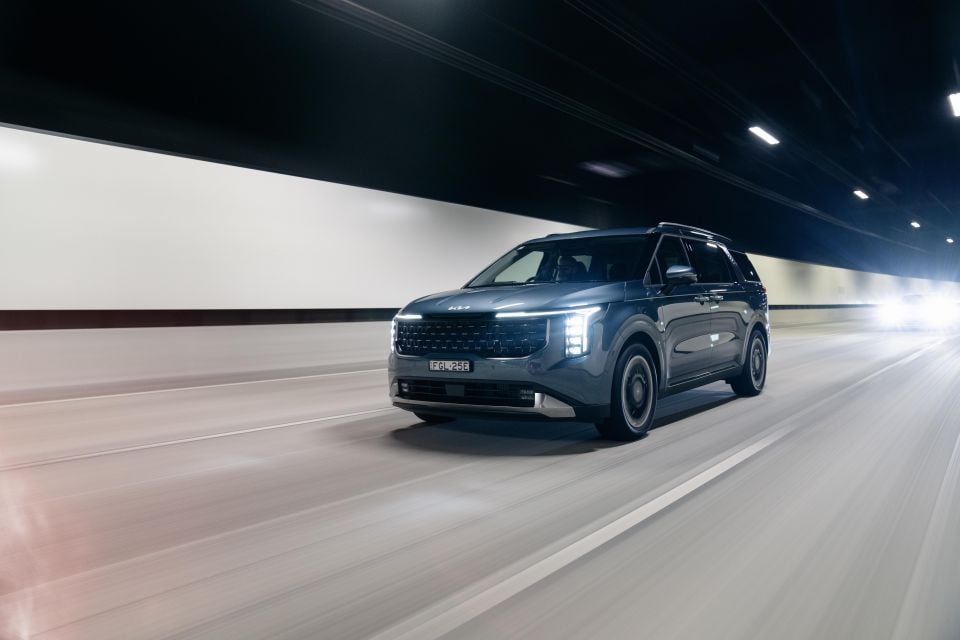
Has the Aussie crew nailed it? You bet. It feels more comfortable and composed in urban driving, settling smoothly over smaller bumps.
While there’s still a bit of bucking at the rear over speed humps (I was a rear-seat rider en route to the event, and parents in a hurry should be aware that those in the back will really feel the bump). I still think it feels solid and sorted in most situations, however.
And that includes higher-speed driving, where it is more than competent when it comes to changing direction. While the suspension has a bit to do with that, there’s also a retuned steering map to make it a bit more predictable and with better feel to the driver’s hands.
Parking is a cinch too, if you choose a model with a surround-view camera. It makes seeing around this big family bus a lot easier than it otherwise might be and for parents, that peace of mind might well be worth the cost of entry into a mid-spec or higher grade.

Look, honestly, for the type of car this is, I didn’t think the existing setup for the dynamics of the vehicle was too bad, but this is certainly a more enjoyable experience for the driver, and the passengers, too. As for other refinement considerations, there’s minimal road noise intrusion into the cabin compared to some other vehicles this size, and indeed it’s a pretty serene experience for those in the front, or the back.
Here’s a rundown of the standard fit items across the MY25 Kia Carnival line-up.
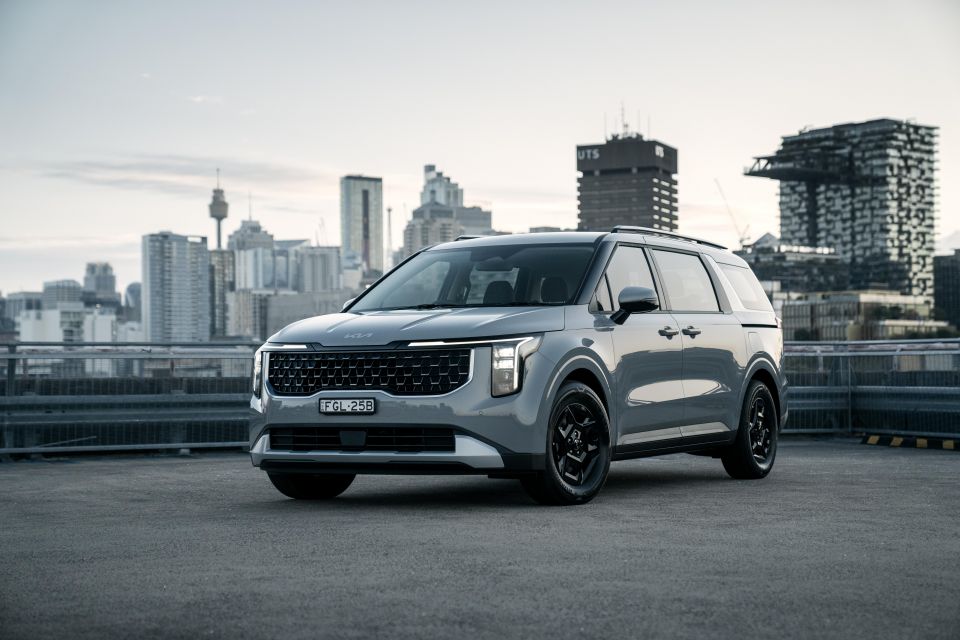

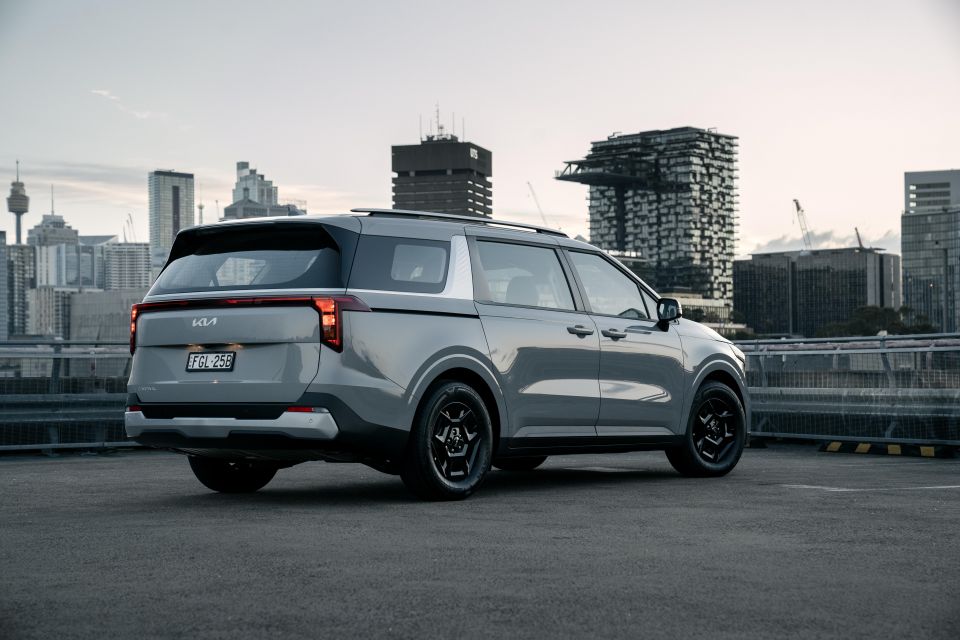
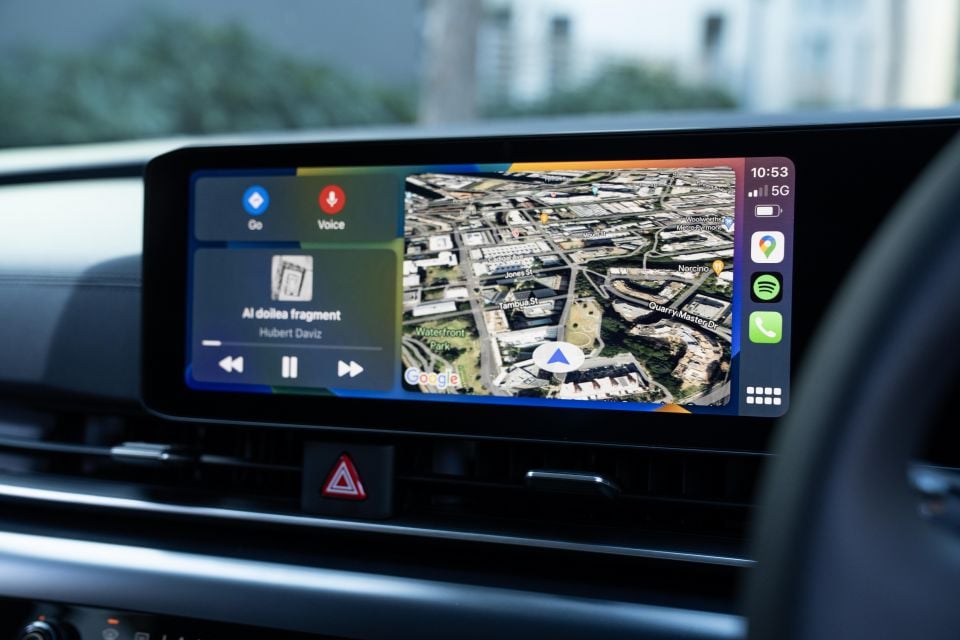
Carnival S standard equipment:
Carnival Sport adds:
Carnival Sport+ adds:
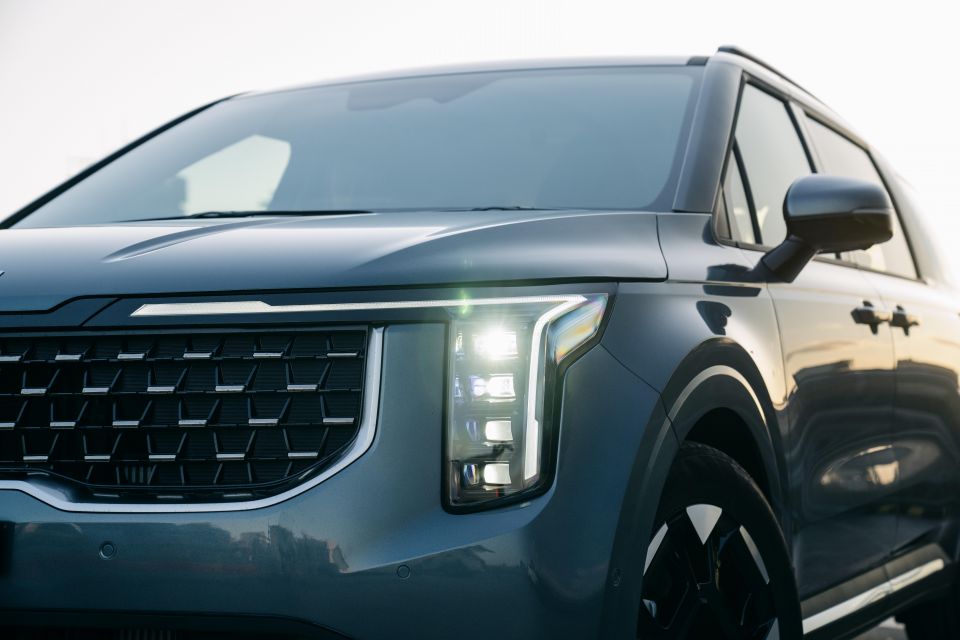
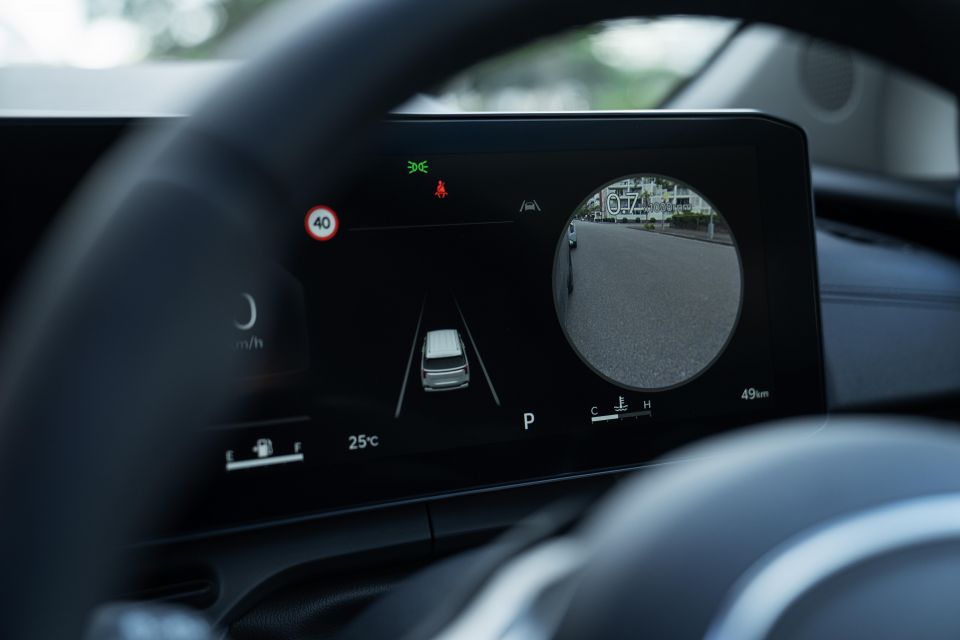

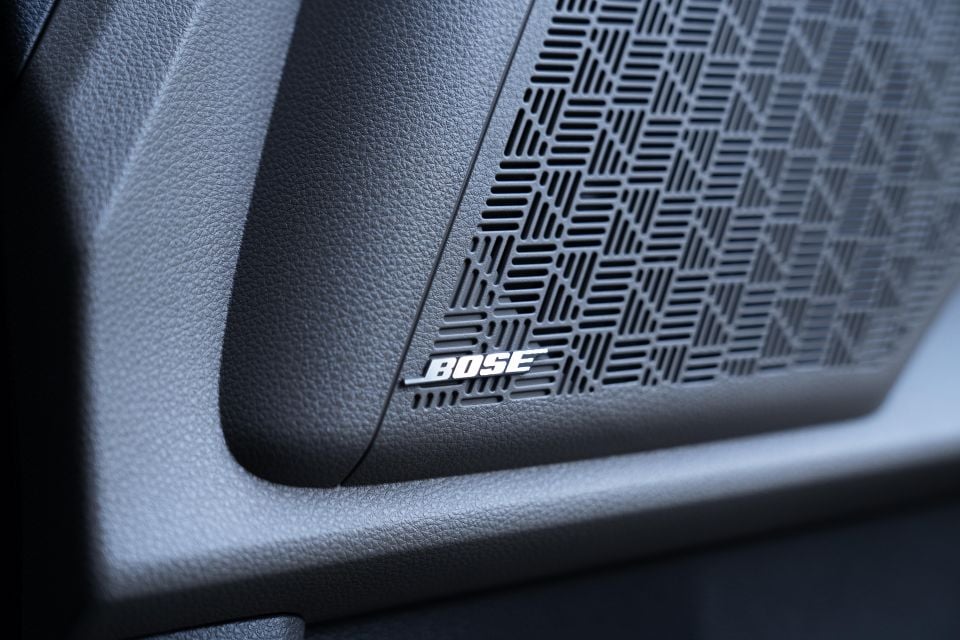
Where expert car reviews meet expert car buying – CarExpert gives you trusted advice, personalised service and real savings on your next new car.
Carnival GT-Line Lite adds:
Carnival GT-Line adds:
Kia Australia has confirmed it’s consulting ANCAP on the adjustments that have been made, and it anticipates the Carnival will be able to continue on with its existing five-star ANCAP safety rating from 2021 testing.
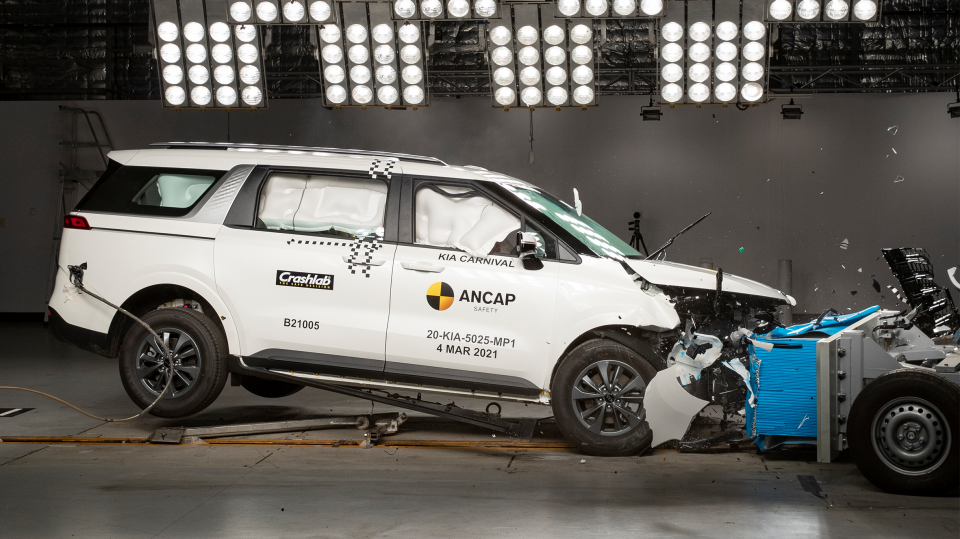
In that assessment, the pre-facelift Carnival achieved an adult occupant protection rating of 90 per cent, a child occupant protection rating of 88 per cent, as well as 68 per cent for vulnerable road user protection, and 82 per cent for safety assist.
The brand has added safety tech across the range for this update, including a new speed sign recognition system that will warn drivers if they are entering a new signposted speed zone, and/or if they are travelling above what the car thinks is the signposted limit for that area.
It re-activates each time you drive the car, and while it can be handy if you’re driving in an area where you’re not sure of the speed limits, if you live somewhere that has multiple changes to its limit on your daily drive, it can be very, very frustrating to have to waste time to turn it off, every time you get into the car.
Furthermore, Kia should be applauded for including a new front centre airbag standard in all grades, and there’s also front parking sensors fitted to every single variant now, too.
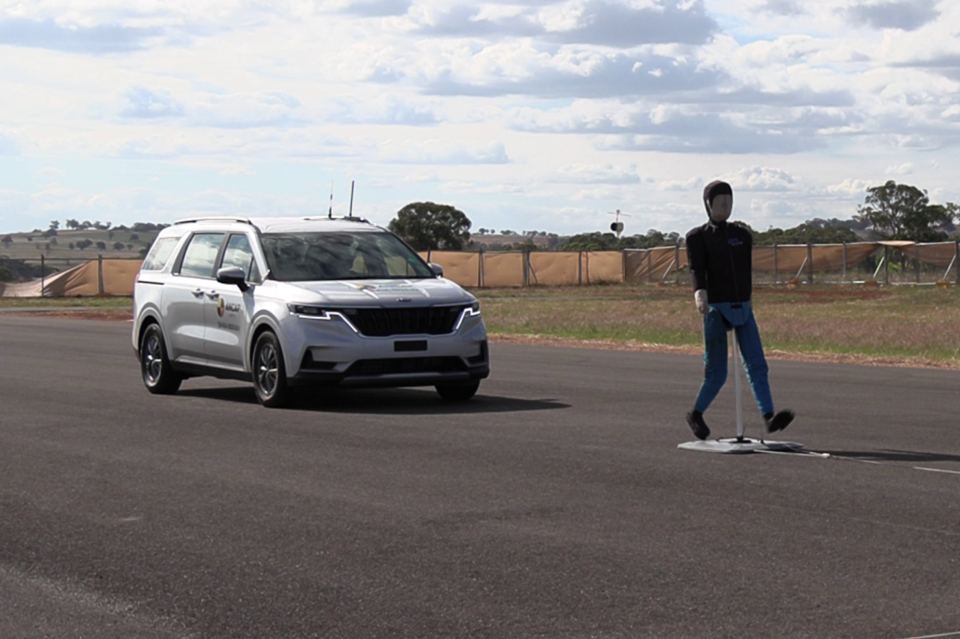
Standard safety equipment includes:
Carnival Sport adds:
Sport+ and up add:
There is no denying the higher grades get the best that Kia can offer.
Also, however, keep in mind all Carnival models come with that new front-centre airbag, as well as dual front, driver’s knee, front side, and full-length curtain coverage, including full protection for those in the back-row outboard seats.
Kia has a strong and solid offering when it comes to ownership considerations.
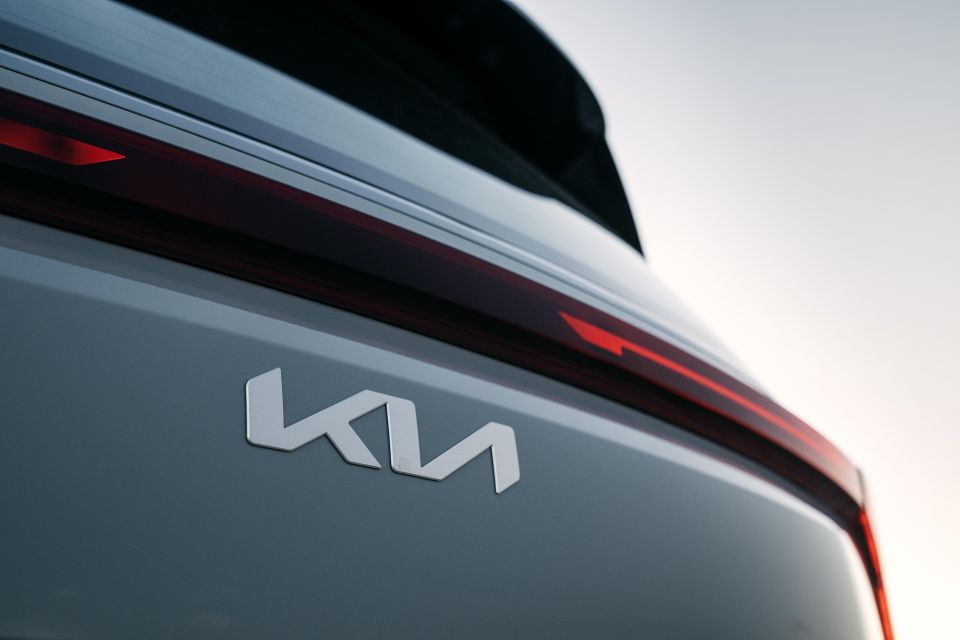
The brand has a seven-year, unlimited-kilometre warranty for its range, and if you service with the brand you can also get up to eight years of roadside assistance.
Servicing is due every 12 months or 15,000km for the V6 petrol and four-cylinder diesel, and the pricing is still to be confirmed for petrol and HEV models.
The diesel model averages $593 per year for maintenance, which is on the higher side.
The diesel is easily the pick of the current powertrains.

And, while the GT-Line has many of the features you’ll love, and the GT-Line Lite helps ease the pricing burden just a bit – neither of those are the one I’d buy if I wanted a Carnival.
Instead, my suggestion would be the Sport+ diesel, which offers handy features like a surround-view camera, electric sliding doors and that clever Blind-Spot View Monitor, and really stands out with its value offering primarily because those higher-spec models don’t really add much in terms of interior differentiation.
Do you agree? Or would you prefer to wait and see what the hybrid is like? Stay tuned, we’ll bring you a review of it in due course.
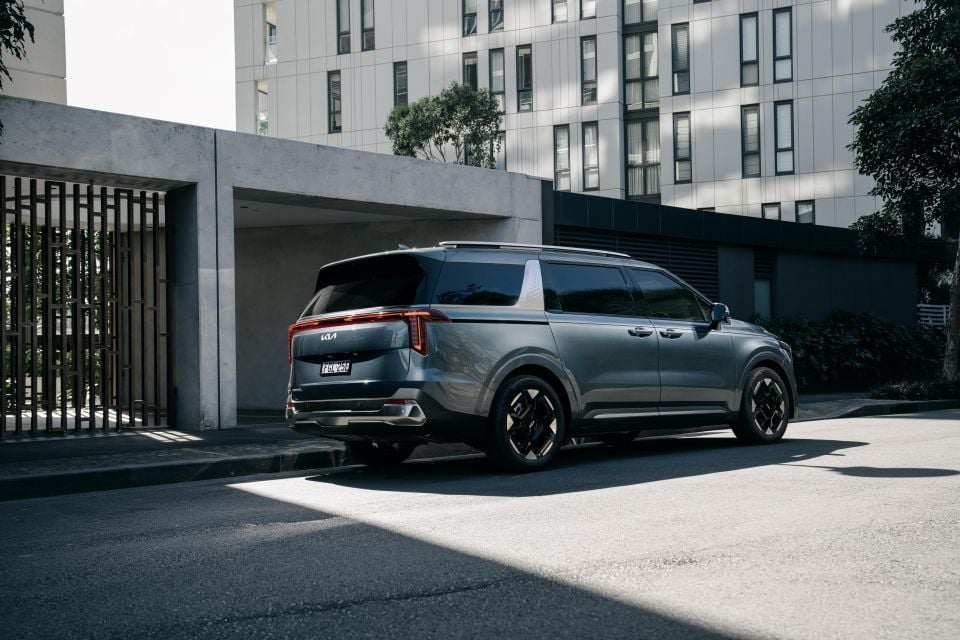
Click the images for the full gallery
MORE: Buy a Kia Carnival MORE: Everything Kia Carnival
Where expert car reviews meet expert car buying – CarExpert gives you trusted advice, personalised service and real savings on your next new car.
Matt has more than a decade of experience in automotive journalism, and loves exploring the pros and cons of new cars, delving into deep-dive industry stories, and going for a drive just for the fun of it.


Josh Nevett
5 Days Ago


Andrew Maclean
4 Days Ago


Shane O'Donoghue
4 Days Ago


Anthony Crawford
3 Days Ago


Matt Campbell
2 Days Ago


James Wong
20 Hours Ago